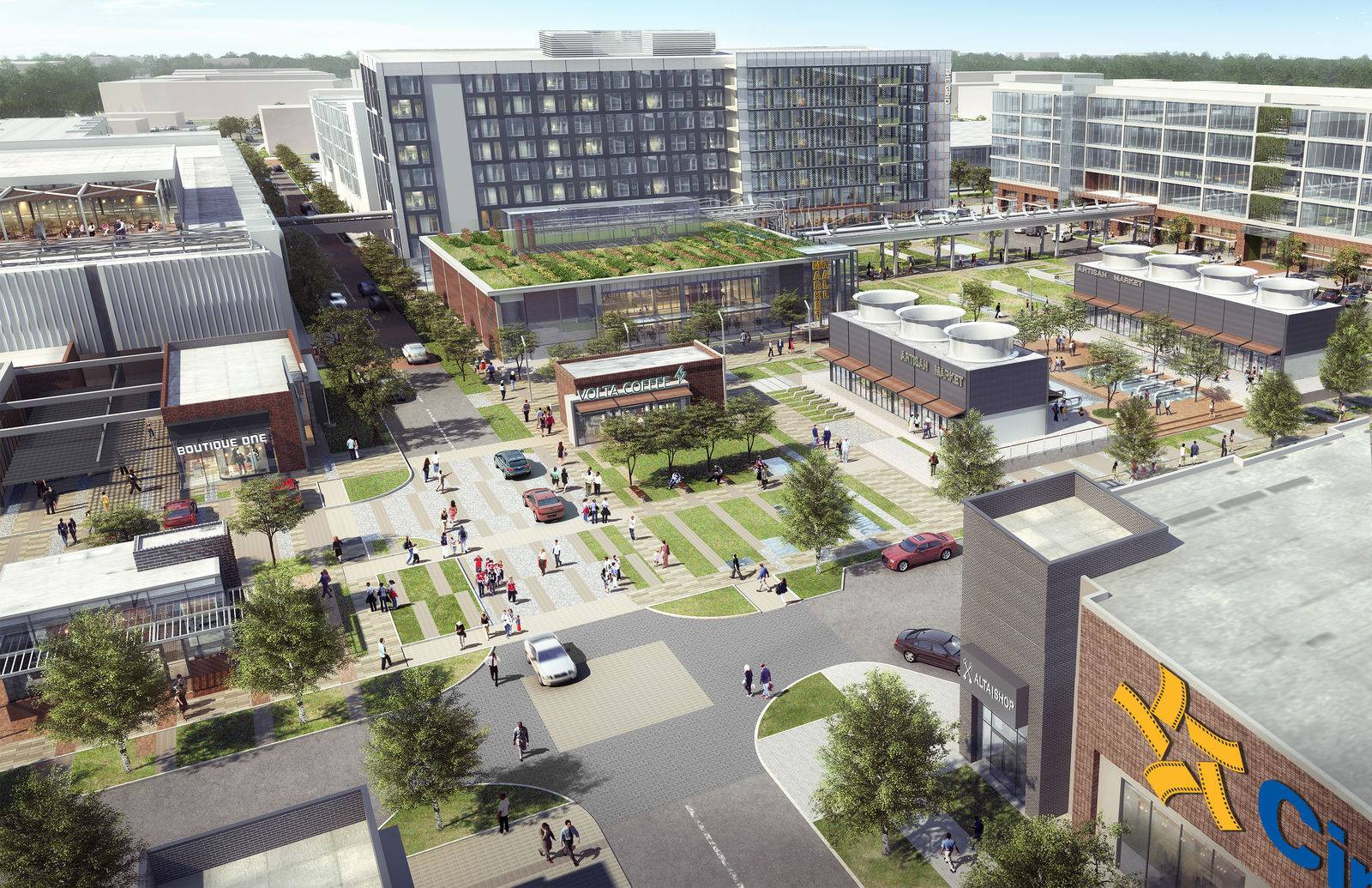
Fort Bend County, one of the fastest-growing counties in the nation, has become a hotspot for people to live, work and build their businesses, thanks in part to rising new developments and transportation projects.
Spanning nearly 900 square miles, Fort Bend leads the region in affordability, quality of life, level of educational attainment and population diversity, with 29 percent of their population being foreign born, the highest percentage in metro Houston, according to the Partnership's Houston Facts publication.
Since 2000, Fort Bend County’s population has tripled and is expected to reach 1.8 million by 2050, according to Woods & Poole.
Fort Bend is primed for more growth as new developments and infrastructure projects get underway that will drive businesses and connectivity.
Infrastructure
Only 30 miles southwest of Houston, Fort Bend County encompasses six thriving cities including Fulshear, Missouri City, Richmond, Rosenberg, Stafford and Sugar Land. Home to various transportation networks like I-69, Westpark Tollway and Fort Bend Toll Road, residents have convenient access to all the Bayou City’s top attractions and other cities.
To accommodate growth, several infrastructure projects are underway.
Proposed in 2016, the Highway 36A project aims to create a major transportation corridor by adding 65 miles to the existing Highway 36. An environmental study will be initiated for the proposed project later this year, after being delayed due to the contract needing updates. If the project comes to fruition, Highway 36A would run through Brazoria, Fort Bend and Waller Counties, relieving congestion, improving freight movement and providing more hurricane evacuation routes.
Additionally, the Westpark Tollway, which leads into FM 1093 that serves Fort Bend and Harris Counties, is currently under construction. The project will extend the Westpark Tollway from FM 723 to the Texas Heritage Parkway.
In March, Fort Bend County announced $70 million in funding for 30 mobility projects. The new funding will increase the county’s investment in the northbound segment of Grand Parkway frontage road construction—from Westheimer Parkway to Cinco Ranch Boulevard. The funding will also support segmented frontage road construction along Highland Knolls Drive to the north and FM 1093 to the south on either side of the Grand Parkway.
Business Community
Home to a diverse and growing commercial sector consisting of Fortune 500 companies, large employers, international businesses and innovative startups, Fort Bend has become an ideal location for businesses due to its talented labor market and close proximity to Houston.
Over the last decade, Fort Bend’s business community has skyrocketed from 8,600 businesses to nearly 15,000, according to the Fort Bend County Economic Development Council.
In 2021, Frito-Lay, the $18 billion convenient foods division of PepsiCo, Inc. expanded its facility in Rosenberg. The $200 million investment will add two manufacturing lines for Funyuns and tortilla chips, as well as increase capacity in its warehouse to enhance capabilities and enable future growth. The project is expected to be completed this year and will provide 160 new, full-time jobs.
Other major employers include Amazon, FedEx, UPS, SLB, Champion X, Dollar Tree and Texas Instruments.
Additionally, Fort Bend houses seven business parks that offer development-ready and redevelopment spaces.
Quality of Life
Recently crowned the second-best county to live in Texas, Fort Bend County is famously known for its exceptional quality of life.
From catching a baseball game at Constellation Field and taking a stroll through Seabourne Creek Nature Park to attending a concert at the Stafford Center or the Smart Financial Center, there is no shortage of activities.
Sugar Land Town Square, a 1.4 million-square-foot mixed-use development, offers a multitude of dining and shopping options. This premier destination is strategically placed at the at the intersection of U.S. 59 and Highway 6 and features a 300-room full-service hotel and conference center, an 82,000 square-foot City Hall, 167 mid-rise residential condos, 566,000 square feet of Class A office space and 223,000 square feet of retail and restaurants. Anchored by a central plaza and green space, the Sugar Land Town Square provides the ultimate gathering space for concerts, festivals and other community events.
Another one of the county’s biggest allures is its award-winning education system and access to top-ranked colleges and universities in greater Houston. Boasting six school districts and four institutions of higher learning, including the University of Houston – Sugar Land, Fort Bend continues to lead the region in educational attainment, with 48 percent of adults having a bachelor's degree or higher, the highest percentage than any other county in Greater Houston, according to the Partnership's Houston Facts publication.
As more people move into Fort Bend, new developments are underway.
Austin Point, a first-of-its-kind 4,700-acre master-planned town, is set to revolutionize Houston living. Strategically placed at the future intersection of the Grand Parkway and the Fort Bend Parkway, Austin Point will feature 1,600 acres of mixed-use commercial development, including 14 million square feet of apartments, retail, office and medical space.
Additionally, the new development will include a walkable downtown area with an “innovation zone” that will feature hospitals, technology and life sciences labs and corporate headquarters.
When fully completed, the development will consist of 14,000 homes, with an estimated population of 50,000, more than Rosenberg, which has about 40,000 residents.
The first phase of the development, which recently broke ground, will include the main amenity, The 1824, a central park and community center with a café, wine bar, large front porch, an event lawn, children's play area, beer garden, food truck court, walking trails and a dedicated space for outdoor fitness activities and games.
Other new developments include The Grid, a 192-acre mixed-use center. Located at the gateway of Houston’s innovation corridor on I-59 in Stafford, The Grid provides more than 350,000 square feet of office space, hotels, pop-up shops, a food hall, rooftop dining and 2,400 urban residences. The Grid features vibrant public green spaces for concerts, festivals and outdoor movie screenings. The first two phases of the project have been completed.